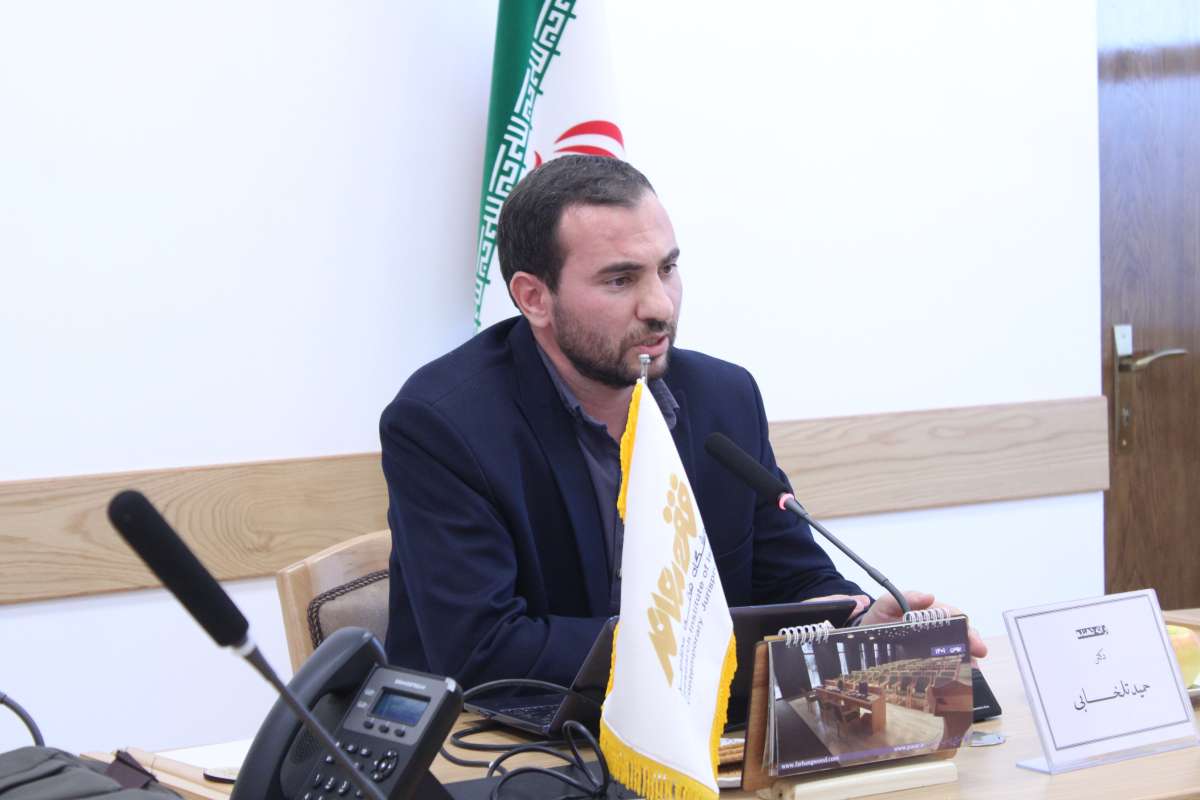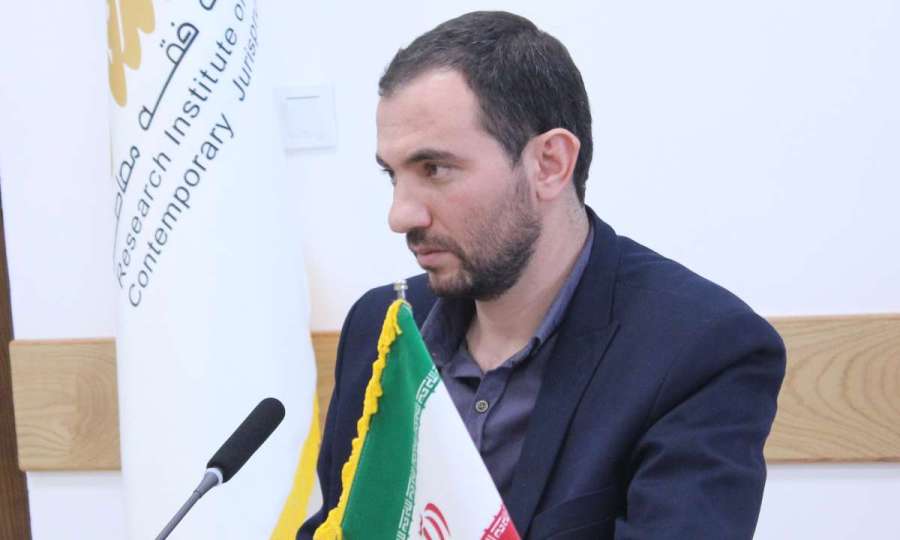
What social and sociological assumptions are there to solve art jurisprudence issues?
Paying attention to time and place, paying attention to the opinions of experts and paying attention to the history of Islam are some non-cognitive and social presuppositions in art jurisprudence issues that should be paid attention to.
Time and place are very decisive elements in issuing a verdict. An issue that had a ruling in the past may find a new ruling in the relations governing politics, society, and the economy of a system; This means that with a detailed understanding of the economic, social and political relations, the same first issue, which is not different from the old one in terms of appearance, becomes a new issue that, as a rule, also requires a new ruling. Imam Khumayni also considers the ijtihad of a jurist ignorant of time and place to be inefficient and even impossible. From this point of view, the time and place that show the events of each era and environment have an effect on the subjects of the rulings. The way of influence of time and place is in the form of influence on the examples of rulings, meaning that the examples of the subjects of rulings may change over time.
Another influential issue in jurisprudence is paying attention to the opinions of experts. For instance, the Safavid period is one of the periods when Shiite jurisprudence became active in the community. Al-Muhaqqiq al-Karaki was among the jurists who took important steps in this field. He brought up discussions such as the authority of the jurist and its limits, al-Bahth al-Kharij, al-Muqasmah, and Friday prayers, which received the attention of the jurists. Thus, the history of paying attention to social jurisprudence can be said from the 10th century, and the researcher al-Karaki has played a serious role in paying attention to social jurisprudence. Today, paying attention to gathering the opinions of jurists, especially those who have followed the social approach by using experts and elites of the society, can be effective in the process of ijtihad and reaching jurisprudential issues in performing arts.
Another social assumption in art jurisprudence issues is to pay attention to the history of Islam. As an instance, Ayatullah Burujerdi considers it necessary to pay attention to the history of Sunnis, even apart from the history of Shiism. Basically, one of the merits of Ayatullah Burujerdi’s jurisprudence was his great attention to the jurisprudential history of the issue. Thus, studying the history of the infallible imams teaches us the external reality of jurisprudence and the objectivity of the Imam’s words, which has a direct and sometimes indirect effect on the issuance of a jurist’s verdict.
These presuppositions that were mentioned can be analyzed not only in art jurisprudence, but also in all additional jurisprudence such as economic jurisprudence, political jurisprudence, etc.
Is it necessary to pay attention to its social and sociological attachment in order to fall into the category of art? How can “the need to pay attention to social and sociological connections” be analyzed from a jurisprudential point of view?
In jurisprudential issues, the adaptation and connection of the jurisprudential concept with external instance is of fundamental importance. These external examples are revealed according to time and place, according to the opinion of experts and according to history. It is true that the concept of jurisprudence is an epistemological matter and it is central to the social situation, which is a non-cognitive matter, but it is necessary to pay attention to the social situation and external instances in order to link jurisprudential concepts with social instances. The greater the compatibility of concepts and examples, the more empathetic the verdict will be for people.
If from a social point of view, the conditions for issuing a fatwa are not ready, can that fatwa not be issued or changed?
Because of the rapid social developments and the addition of new social instances, it is inevitable to pay attention to social determinants. In a series of rapid social developments, it is not possible for a jurist to enter all social issues as an instance. There should be a distance to distinguish the different dimensions of that example and its difference with similar instances; A distance so that a precise jurisprudential opinion can be raised on that matter. For instance, during the period of Pahlavi rule, some jurists issued a fatwa on the sanctity of using radio and television and listening and watching it. At the start of the introduction of photography cameras, some had the same view towards photography and imaging; But when the different dimensions of that issue became clear, the jurists found a more balanced view of these emerging phenomena.
In performing, musical and visual arts, it can be said that both the people and the officials do not pay attention to the fatwa of the jurists. Is this due to the lack of attention of the jurists to the social conditions and society of issuing fatwas or not?
It is caused by the lack of attention of jurists to social conditions and the lack of attention of artists to the verdict of jurists. To clarify the discussion, l give some instances from the performing arts.
For instance, when it comes to issues such as the portrayal of the infallible and the quasi-infallible in the cinema, the audience is expected to represent the sacred and spiritual aspects of the infallible. And the inappropriate use of innocuous narration and the like causes the spiritual and holy aspects of the innocuous character to degrade and innocuous people to be caught in the fence of a mere historical perspective. Here, the jurists react to this issue not because of the sanctity of the depiction but because of the reduction of the infallible character.
As some jurists have pointed out regarding the depiction of the infallibles: It is that, and it is very difficult to preserve the sanctity of Sayyid al-Shuhada’ and his companions, so caution should be taken in this regard.
On the other hand, this jurist’s opinion occurs by considering the medium of cinema, taking into account the time and place, paying attention to the opinion of experts and the history of depiction in Islam, that the sanctity of depiction in history has been a secondary matter.
In performing arts, the character and the event, when the performance does not create a feeling in the audience and no meaning is formed, it refers to the lack of action and the choice of the character in the event. This objection may be due to the weakness in the creation of the drama; That is, the author of the play could not create a dramatic event and involve the character in difficult choices. Or it may be due to the weak performance of the actors. Actors who are more involved in showing themselves and their external personality instead of getting into the role and reproducing the dramatic event.
This approach harms the audience and does not fulfill their expectations from watching a play, and it also harms the creators of the play, and from this point of view, it involves the writer or actor in the issue of copyright. In Iranian cinema and television, many box-office and audience-friendly works are facing such damages; Because when the characters do not have a choice in a critical event and situation, their presence (which is often used by well-known and expensive actors), their cover and their speech will be in a safe position that is destructive (in terms of the performance of the performance and its reflection on the audience); Because it does not play a serious role in the development of the story and the audience sees the actor out of the role, in which case the audience’s negative feelings are often aroused, and for this reason, the issue becomes different for the jurisprudence.
But if the character’s action and choice is in a critical situation and event, a jurisprudential ruling such as the sanctity of a woman’s singing, which many jurists believe in, may not lead to a negative reaction from the jurists in the movie “I am a mother”; Because the singing of Hengameh Qaziani’s character in critical situations is completely consistent with his actions; But if the same singing is examined on the basis of age, it will have a different ruling from the point of view of jurisprudence.
Thus, the social jurisprudence and the role of time and place in issuing the verdict that we mentioned have a direct role in dramatic events. For instance, from the jurisprudential point of view, women’s hair showing, unconventional adornment and heavy makeup are problems; But in performing arts, the story may require the representation of a negative character with minimal hijab, or unconventional make-up and make-up, or issues of this kind are positive and sublime, they may have a different jurisprudential ruling to the same extent. Likewise, the use of wigs in the security series of Iranian TV has been accepted by the audiences without any margin and without jurisprudential sensitivities.
Thus, a two-way view is necessary from both the jurists and the artists in order to achieve a better dialogue.
6. Is it one of the jurists’ duties to create a suitable social platform for issuing fatwas?
It is definitely not one of the duties of jurists at the starting point. It is the responsibility of politicians and officials to create a suitable social platform. Officials have the duty to reduce various social crises so that the issuing of fatwas has a positive effect. Basically, in crisis-ridden societies where a significant part of the people, under the influence of the media, blame many of these crises on the collusion of jurists with the authorities, a suitable social platform for issuing fatwas is not created. Thus, jurists based on social developments that are caused by economic, political and cultural crises, even taking into account all social assumptions in issuing rulings, unfortunately, the more crises occur, the more jurists will not have the same effect on society.
This note is a part of the electronic magazine “Fundamentals of Art Jurisprudence” which was produced in collaboration with the School of Jurisprudence of Art and the Ijtihad Network website.

